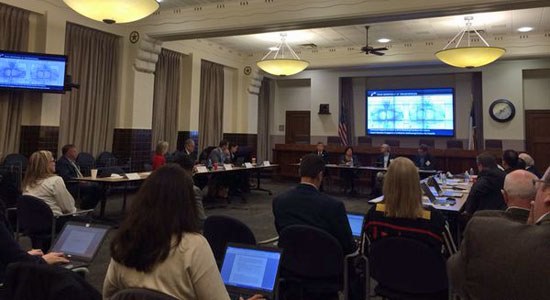How can technology improve the future of transportation? That is one big hairy question, and the Texas Department of Transportation (TxDOT) set out to answer it over the last year with the help of the UT Austin/Center for Transportation Research (UT/CTR). Without identifying the technologies which will have the greatest impact, they cannot determine where to place their bets today to start incubating solutions.
Last month, I attended TxDOT’s Texas Technology Task Force (TTTF) where thought leaders from varying areas of private industry explored key technology trends including connected vehicles, freight platooning, alternative fuel vehicles, commercial drones, and road system efficiency analysis through Big Data. The notes from each of the panel discussions were captured in this report published by TxDOT and UT/CTR.
Of the list of technology trends that were covered, freight platooning is a concept most people outside of the transportation industry know about. While traveling on the highway, you have likely seen 18-wheelers closely following each other in a convoy. They actually do this on purpose to reduce aerodynamic drag and increase fuel efficiency. Utilizing technologies like Vehicle to Vehicle (V2V) communication, radar, and big data helps further leverage the cooperative potential of multiple trucks by reducing the space between them while augmenting driver safety. Industry tests have already shown upwards of 10% fuel savings for the trucks that follow in a convoy. As the technology advances, huge environmental and operational cost benefits would result as convoys of trucks could potentially be formed with a single driver leading the pack and autonomous vehicles following. It is exciting that TxDOT is exploring how this may happen on Texas roads.
The discussion seemed to go back to the same two questions: what data can be collected and what value can TxDOT provide to Texans through the analysis of the data? In other words, the consistent thread throughout the day was the application of the Internet of Things (IoT). The discussion did not center on the art of the possible, as many IoT conversations can, but rather reality and the experiments that they can begin to invest in immediately. The City of Austin has already shown leadership in the area of big data by providing public access to large sets of data through the Austin Open Data Portal, and they are looking to continue pushing the envelope with the future of transportation as well.
To learn more about the specific technologies that TxDOT is exploring, check out this series of white papers published by UT/CTR.
What trends in transportation technology are you most interested in learning more about? Let’s continue the discussion on Twitter @kdtwill.

